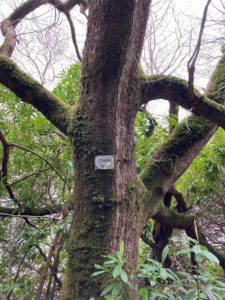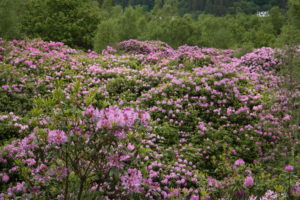We thoroughly enjoyed the Cowal Way over the long Easter weekend. It’s a great walk, but all along the way there was a reminder that we’re still just paying lip service to the idea of restoring nature and boosting biodiversity in Scotland.
Hundreds of millions of pounds are needed to deal with a serious threat to nature as we know it, and as far as I know only a tiny fraction of that is being spent.
The real Cowal Way is about 50 miles, ignoring the addition of an extra stint that takes you on to Loch Lomond, resulting in it being (unnecessarily) renamed the Loch Lomond and Cowal Way.
The start at Portavadie can be neatly reached by the CityLink bus to Tarbert and the CalMac, and you walk from there to Ardgartan at the foot of the Rest and Be Thankful road, a couple of miles out of Arrochar.
The scenery starts gently and becomes increasingly rugged. On the way you traverse coast, woodlands, minor roads and a big long hill pass, and finally a couple of proper mountain cols to take you over to Lochgoilhead and then on to Loch Long.

After a night in Kames we started day two through Tighnabruaich and on to the coastal section along Loch Riddon. It’s here you really start to notice the plague of rhododendrons that cling to the steep, rocky hillside and shoreline.
On one area along the gravel road I saw a few years ago that it had been been cleared of rhodies. Now it has the small, leggy green plants of young rhodies all over it.
In other places on the steeper rockier section they have begun to overgrow the track, and form dense, deep masses up the hillside.
Rhodies – invasive, non-native rhododendron ponticum – cropped up at intervals all along the route, covering swathes of countryside. They were probably most noticeable again at the otherwise delightful waterfall walk in Glen Branter near Strachur, where a walkway threads itself among the crags.
Small gorges, steep gullies and crags were festooned with the plants, in the sunshine lending the place an exotic jungle air.
But the fact is these bushes will kill our native rainforest for sure unless decisive action is taken against them.
A 19th-century cross between Mediterranean ponticums and cold-hardy north American rhodies, they are perfectly suited to this country and can also overwhelm moorland, montane scrub, and any other habitat where they decide to grow.
Little else survives alongside them, and they will eventually – in a hundred years, or two hundred – kill off the forests and other habitats that are vital to biodiversity and carbon capture.

Four years ago I squeezed out of the then Forestry Commission Scotland (FCS) an admission that the cost of eradicating rhododendron ponticum in Scotland would be about £400m, £40m a year for ten years.
That would be the only way of stopping them. Instead about £2m was being spent by FCS and in private grants to control the pest. It’s not nearly enough to even stop them spreading. The figure doesn’t appear to have changed much.
I’m not aware much has changed since then, although the Alliance for Scotland’s Rainforest is increasingly vocal on the subject and is talking about £250m needed to clear rhodies out of the rainforest zone.
As a use of Government money, rhodie clearance can also boost policy objectives such as securing remote rural communities with jobs and business. Most of the £400m or £250m would go on labour, in parts of the country where jobs are scarce: while some will scoff at the figure, the spending would bring benefits over and above those to nature.
So if the Government has even any pretensions to being serious about helping biodiversity, it should tackle this issue head on. We are living with the consequences of the environmental neglect of previous generations. Let’s do this one thing to make things better for those who come after us.